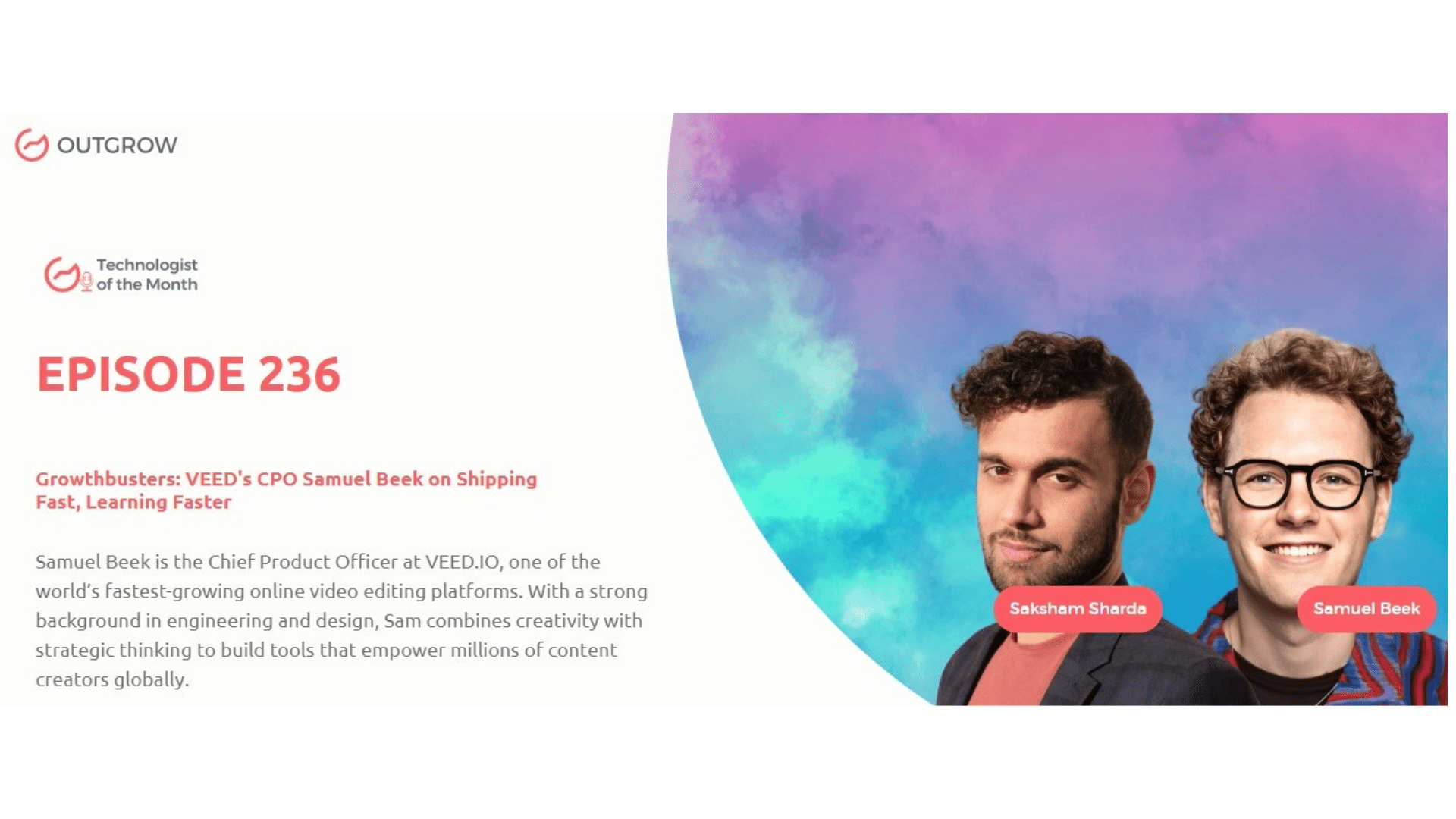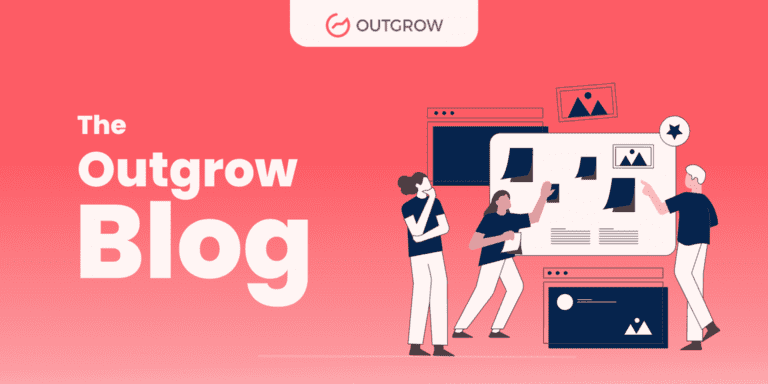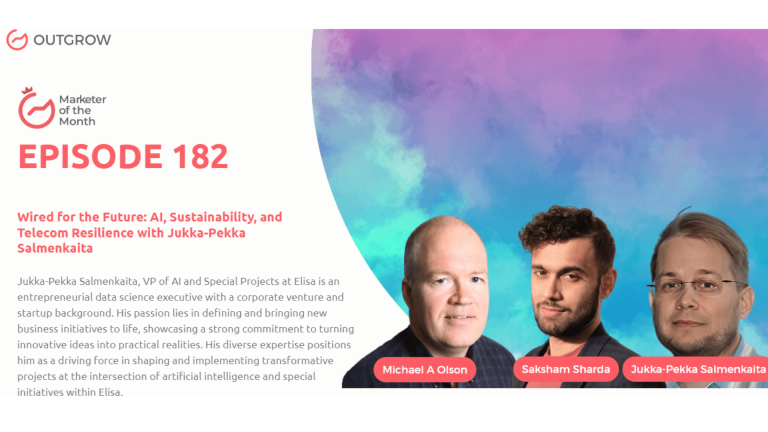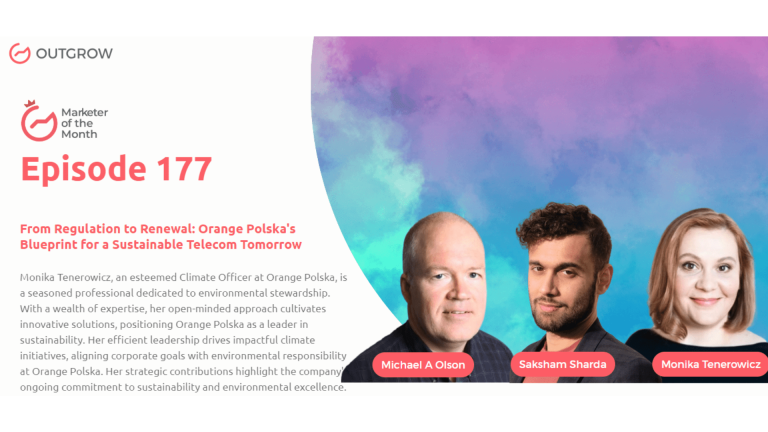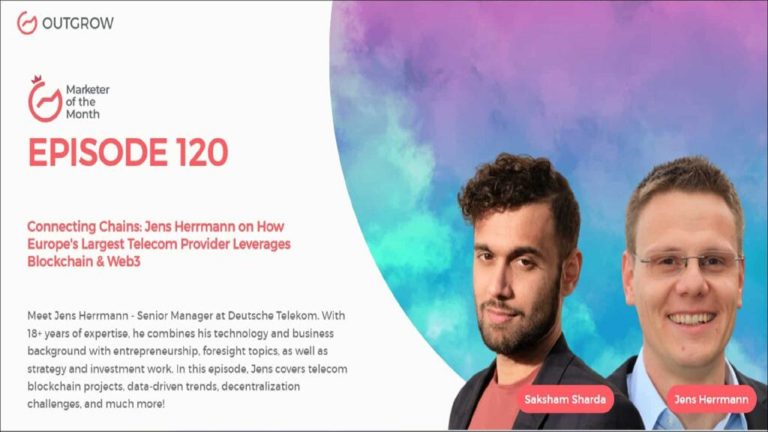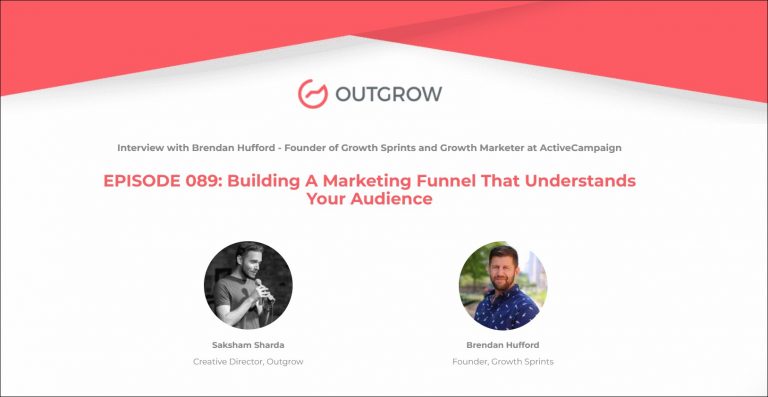EPISODE 236: Marketer of the Month Podcast with Samuel Beek
Table of Contents
Hey there! Welcome to the Marketer Of The Month blog!
We recently interviewed Samuel Beek for our monthly podcast – ‘Marketer of the Month’! We had some amazing insightful conversations with Samuel and here’s what we discussed about-
1. Creative pragmatism philosophy in product decision-making.
2. AI-first approach to video editing innovation.
3. Growth hacking through Google search trend analysis.
4. Building VEED’s ChatGPT store integration success.
5. Cross-departmental collaboration between product, engineering, and marketing.
6. Social media addiction challenges for tech leaders.
7. Future vision for AI-generated versus human-created content.
About our host:
Dr. Saksham Sharda is the Chief Information Officer at Outgrow.co He specializes in data collection, analysis, filtering, and transfer by means of widgets and applets. Interactive, cultural, and trending widgets designed by him have been featured on TrendHunter, Alibaba, ProductHunt, New York Marketing Association, FactoryBerlin, Digimarcon Silicon Valley, and at The European Affiliate Summit.
About our guest:
Samuel Beek is the Chief Product Officer at VEED.IO, one of the world’s fastest-growing online video editing platforms. With a strong background in engineering and design, Sam combines creativity with strategic thinking to build tools that empower millions of content creators globally.
Growthbusters: VEED’s CPO Samuel Beek on Shipping Fast, Learning Faster
The Intro!
Saksham Sharda: Hi, everyone. Welcome to another episode of Outgrow’s Marketer of the Month. I’m your host, Dr. Saksham Sharda, and I’m the creative director at Outgrow. co. And for this month we are going to interview Samuel Beek, who is the Chief Product Officer at VEED.IO.
Samuel Beek: Great to be here. Thank you.
Don’t have time to read? No problem, just watch the Podcast!
Challenge yourself with this trivia about the exciting topics Samuel Beek covered in the podcast.
Or you can just listen to it on Spotify!
The Rapid Fire Round!
Saksham Sharda: At what age do you want to retire?
Samuel Beek: Next year.
Saksham Sharda: How long does it take you to get ready in the mornings?
Samuel Beek: 30 minutes.
Saksham Sharda: Most embarrassing moment of your life?
Samuel Beek: Losing my phone in China and not knowing where my hotel was.
Saksham Sharda: Favorite color?
Samuel Beek: Blue.
Saksham Sharda: What time of day are you most inspired?
Samuel Beek: Mornings.
Saksham Sharda: How many hours of sleep can you survive on?
Samuel Beek: Seven.
Saksham Sharda: The city in which the best kiss of your life happened?
Samuel Beek: Amsterdam, my home.
Saksham Sharda: Pick one, Mark Zuckerberg or Sam Altman?
Samuel Beek: Sam Altman.
Saksham Sharda: How do you relax?
Samuel Beek: Sailing, playing squash, cooking
Saksham Sharda: How many cups of coffee do you drink per day?
Samuel Beek: Three.
Saksham Sharda: A habit of yours that you hate?
Samuel Beek: Social media addiction.
Saksham Sharda: The most valuable skill you’ve learned in life?
Samuel Beek: How to tell a stupid story.
Saksham Sharda: Your favorite Netflix show?
Samuel Beek: La casa de papel.
Saksham Sharda: Are you an early riser or a night owl?
Samuel Beek: Early riser.
Saksham Sharda: One-word description of your leadership style?
Samuel Beek: Enthusiastic.
Saksham Sharda: Coffee or tea to kickstart your day?
Samuel Beek: Coffee.
Saksham Sharda: Top priority in your daily schedule?
Samuel Beek: Having thinking time.
Saksham Sharda: Ideal vacation spot for relaxation?
Samuel Beek: Italian coast.
Saksham Sharda: Key factor for maintaining a work-life balance?
Samuel Beek: Exercise.
The Big Questions!
Saksham Sharda: I’m going to get to the longer questions now. These you can answer with as much time and ease as you’d like. You’re known for being a creative pragmatist. How does that philosophy shape your decision-making process at VEED when deciding what to build next?
Samuel Beek: I don’t believe that data can answer all our questions. So, I think sometimes we need to just build up confidence and get creative a little bit. So, I think in my product practice, I try to prioritise things that are impacting a lot of people, but I’m happy to also take a bet here and there and do something fun or something creative that might be a bit out of the ordinary.
Saksham Sharda: How do you differentiate between a feature that’s nice to have versus one that drives core value?
Samuel Beek: I think features that drive core value, even if very poorly executed, still get a lot of adoption and love. Nice to have, it is about the kind of details and things like that. I always look at whether users could live without something, and if they can, it’s less of a high priority.
Saksham Sharda: What have been the most significant shifts in your role as VEED has scaled?
Samuel Beek: In the beginning, I was kind of figuring out what we should build. And then, as the company scaled, I needed to not only figure out what we should build, but also who the people are to build it, and in what structure we can build this as well as we can. So I had to zoom out a lot and work more through people and with people than directly on the product.
Saksham Sharda: Do you have any story around any recent product design where creativity and pragmatism had to find balance?
Samuel Beek: Yeah, I think one of the things we’re always looking at within VEED is what is a great-looking video and how can we make that within VEED. So, for example, one of the things that we noticed is that a lot of people were posting wide-screen videos on TikTok, and they look ugly. Nobody was asking us or complaining about this to us, but it’s just something that we noticed. And then we realised, hey, we can use AI to actually generate a thing above the video and below the video so that it looks like a portrait video on TikTok and Reels. And this is one of those places where I think a lot of things around creativity, as well as kind of product data, all come together and bring a super successful feature.
Saksham Sharda: Speaking of AI, then how has VEED adapted to the AI boom, especially in the context of rapid innovation in generative video and editing tools?
Samuel Beek: Yeah, I think we’ve adapted quite well. So one of the things that we’ve seen is that with AI being the first is important. So we try to be the first to launch a lot of the state-of-the-art video models, if you want to use them. So I don’t know when this is going to air, but this week, VO and Seedance are really important video models to have. So those are available on our platform. And we always make sure that we’re the first, and if not the first, we’re the second. That’s one thing we do. And on the other hand, AI forced us to kind of zoom out and look at the bigger problems that our users have and how AI could potentially solve that. So, for example, we used to help users with recording because they were camera-shy or they didn’t know how to record a good video. But now we can go a level further and be like, hey, maybe you don’t even have to be in front of the camera in order to make a good video.
Saksham Sharda: So, as you’ve said, VEED has positioned itself as one of the fastest-growing video editors. What do you think has been the key to that growth?
Samuel Beek: The key to our growth has been kind of connecting growth channels with the product. So one of the things that we’re doing is we grow very quickly through channels like Google, and we look at Google search traffic and have that inspire our product roadmaps. If we see a lot of people Googling something like How do I generate a podcast? We will build that feature into VEED, and because we see that that is growing fast in search, we know for sure that we are going to have a lot of distribution when we release the product.
Saksham Sharda: What’s one thing that surprised you about the way users discovered VEED? Do you have any interesting stories about that?
Samuel Beek: Yeah, definitely. So one thing that is very interesting is that people often find VEED through Google, and they often think we just do the one thing that they Google for.
So, if they come to us for how do I add a sound wave to my video? They just think we’re like a one-trick pony to add sound waves to video. So, while back, we actually realised this and we added a little nav bar to the top of the product that shows you record, edit, and a couple of other things. So it kind of forces you to kind of discover the wider offering, and this little nav bar that took us a day to build has increased revenue by like double-digit numbers.
Saksham Sharda: I also saw that VEED is on the ChatGPT store. Do you have something to say about that?
Samuel Beek: Yeah, so this was like a fun project that we did as the ChatGPT store launched. We wanted to kind of experiment with building a VEED bot, and it was a huge success. I think we’re almost always at the top of the ChatGPT apps. So it’s one of those examples where, you know, trying something out and seeing if it works is sometimes the right thing to do. Don’t get stuck in the data or de-risking stuff. We built something that really connects to users because they’re using ChatGPT to write texts and things like that. But very often, they actually want to make something else, like a video, and we help them make that connection. And yeah, it’s been one of our most successful features of last year.
Saksham Sharda: With so many video tools emerging, how do you differentiate VEED in a competitive landscape?
Samuel Beek: Yeah, we focus on the videos that we think matter, and those are videos in which people tell a story. So in a lot of video tools, you can edit anything and make anything. And we don’t believe that any video is equal, basically. We believe that videos in which people talk and tell a story to the camera are the ones that are most successful and the ones that help businesses grow the most. So we really tried to focus on getting that format really well executed within VEED.
Saksham Sharda: What’s one feature or principle you believe sets VEED apart but isn’t obvious at first glance?
Samuel Beek: I think if you look at VEED, you don’t know how fast we’re shipping. But I think that’s one of the biggest things that our users really love. They know that if they come to us, they get cutting-edge stuff and that there’s new stuff all the time. So I really often hear from our customers who have been using us for a while how they love that we’re kind of transitioning and always adding new things that they couldn’t even dream of when they started. So that’s one of the things that you won’t notice when you use the product once, but when you use it for a while, you’ll be pleasantly surprised.
Saksham Sharda: And are there users that are annoyed by regular updates, and they’re like, Oh, I was used to the old?
Samuel Beek: 100%. You can’t make everybody love you, unfortunately. I think as we’ve transitioned through the AI space, there were some concerns for people who got a bit lost. We’ve been investing a lot in making the product easier to use and better discovery. For example, we’ve added an AI agent where you can basically talk to it and it will do the edits for you. So hopefully users who got a bit confused by the amount of bells and whistles we added will come back and then still love us.
Saksham Sharda: Tell us a bit more about how, as a CPO, you work alongside other leaders in marketing, engineering, customer success, et cetera.
Samuel Beek: Yeah, I think we need to work really closely together. I think if I look at how features get built at VEED, obviously engineering plays a huge role in that. And very often ,we almost start with a technology. We’re like, hey, we can do this with AI video now. Maybe we can build something on top of it. So I have to work super closely together. And I’m talking to our tech team every single day. And then on the marketing side, I see the same thing. Because like I said earlier, we really think about bringing growth into our product. And we think about, okay, what are trends out there in the market that we can build products for? So also there we’re noticing that we really need to kind of identify what people are talking about and then build for that. So it’s, yeah, we’re a great triangle together.
Saksham Sharda: And are there any interesting conflicting priorities related stories between departments that you might want to recount?
Samuel Beek: Of course. I think in product, we always want to ship super fast. And that’s not always great for engineering because sometimes you want to spend a bit more time on making things solid or foolproof. So, definitely, I can see some tensions there. That’s also what we’re noticing with design sometimes. Sometimes we need to bring something to market so quickly that we haven’t really thought through all the details. So it can be a little bit rough-edged in the beginning. But what we see is that after that, when we start learning from what users are using the product for, we can polish i,t and we can make it really great. So it’s a matter of time. And then everything always, everybody’s always happy.
Saksham Sharda: So what does your typical day look like? You wake up in the morning, and how much of it is meetings? How much of it is other stuff, emails?
Samuel Beek: I think a lot of it is, so I tend to kind of spend my time in three categories, kind of thinking ahead and doing strategic stuff. So when I’m doing that, I’m basically making presentations, writing documents, making videos, those types of things. The rest of the day, I spent communicating with people about those ideas and talking to them. So there are definitely tonnes of meetings. And then one thing I try to do is speak to a customer almost on a daily basis. Because I feel like that is a muscle that if I train it well enough, I can really envision how some of the things we’re working on are gonna resonate with our people.
Saksham Sharda: What’s next for VEED? Any big bets you’re placing in the next two months?
Samuel Beek: Yeah, I think video is going through this crazy transformation. People need to produce tonnes and tonnes of videos to stay relevant online, so much so that it’s really hard to create manually. And therefore, we’re seeing a bigger need for generative video. Where that is going, I don’t really know. Like, I think we have some ideas and we’re trying to build on top of them. But I’m very curious to see if, in like a year from now, video that is generated by AI will be indistinguishable from video that is created by humans. If that is the case, I think there’s a ton of exciting products that we’re gonna be launching to work on top of this.
Saksham Sharda: And that does not scare you when the videos from AI are indistinguishable from?
Samuel Beek: There is always a fear aspect, and we will work on initiatives in which we can make sure that customers know that these videos are AI-generated. Social media platforms are already building labelling for this. And there are a couple of watermarking exercises that we can do there. So definitely think that if you wanna know if a video is real or fake, as a user, you should be able to figure that out. That’s something we definitely need to work on as an industry. But I think, you know, right now it’s pretty expensive to produce really great videos, and giving that power to many more people, I think, is a net benefit.
Saksham Sharda: Okay, so you’ve spent your career building tools for creatives. What have you learned about what they truly need and often don’t even know they need?
Samuel Beek: Yeah, that’s a great question. I think creatives need both constraints in space. So basically, they need to have a few constraints so that they can be creative around something, but they also need a blank canvas where they can express themselves. So, for example, in VEED for a while, we would have these templates that are very restrictive and people wouldn’t love them, but they would look great and would perform great on social media. But we need to kind of give people a bit more options to pick stuff, a bit more freedom in order for them to be truly satisfied.
Saksham Sharda: How do you test for usability across such a broad range of creative skill levels?
Samuel Beek: We do a lot of user testing. So basically, before we ship something, we send it out to a lot of users and watch them as they use the product. We also have a panel of super users that we work with to understand how stuff will resonate. And often we just take a bet. We try to ship something in the first way. And then if we see that there are usability issues, we’ll iterate on top of it. My learning from this has been that people are smarter than we think and they can pretty easily use most of the things that we ship. And I think that’s also a testament to our great design team.
Saksham Sharda: We did some snooping and found out that you have a side project, Cloud EMDR. What inspired you to build a tool like that for remote PTSD treatment?
Samuel Beek: During COVID, I knew a therapist. Basically, my mom is a therapist, and I knew somebody who was doing EMDR therapy, which is a PTSD treatment. And both of them were complaining that they couldn’t do that anymore because of the lockdown. And I knew that the lockdown was gonna take a while, and I felt really shit for all the people that didn’t have access to therapy. So I decided to build a tool in which people could do this remotely. And that went completely viral after I built it. And then afterwards, yeah, I turned that into a business. And now I have tonnes and tonnes of customers, and many people across the world are using it to do this therapy.
Saksham Sharda: So, how does working on a health-focused tool differ from consumer-facing creative tools like VEED?
Samuel Beek: It’s very different. First of all, I’m not my own customer, so I don’t really know what that is like. And I need to do a different type of research. It’s slightly more academic, which is a really interesting thing to learn. But the thing that is most striking is that the therapy itself is the product. I’m just kind of facilitating that. And that’s very different from building something like Weed.
Saksham Sharda: So you’ve completed both the retention and growth series at Reforge. What key learnings from that experience have directly influenced your product leadership?
Samuel Beek: I think what Reforge does really well is they create these frameworks for growth.
And I think very often when you’re working on growing a product, there are a lot of things that seem worth doing. And it’s really hard to kind of understand what is more important than something else. I think these frameworks help us map out what the relative impact is between those initiatives.
Saksham Sharda: Can you share any experiment that taught you something unexpected about growth and story?
Samuel Beek: Yeah, many, many. I think one of the things that we’ve been doing at VEED is we’ve made landing pages for features that we didn’t have yet. And it’s a little sneaky, but it worked pretty well. We don’t do this anymore now that we’re a more mature company. But it taught me a lot because it showed me, oh, this feature is not as interesting as something else. So we were going to work on a couple of really big projects, and these things taught us, oh, actually, we shouldn’t do this at all.
Saksham Sharda: So the last question for you is of a personal kind. What would you be doing in your life if not this?
Samuel Beek: I love making stuff and creating. So if I were not doing that in a tech world, I would probably do that more physically. I love 3D printing, woodworking, and building furniture. So I think something in that space would be really, really exciting. And maybe after tech, I’ll get into that.
Let’s Conclude!
Saksham Sharda: Thanks, everyone for joining us for this month’s episode of Outgrow’s Marketer of the Month. That was Samuel Beek, who is the Chief Product Officer at VEED.IO.
Samuel Beek: Great to be here. Thank you.
Saksham Sharda: Check out the website for more details and we’ll see you once again next month with another marketer of the month.
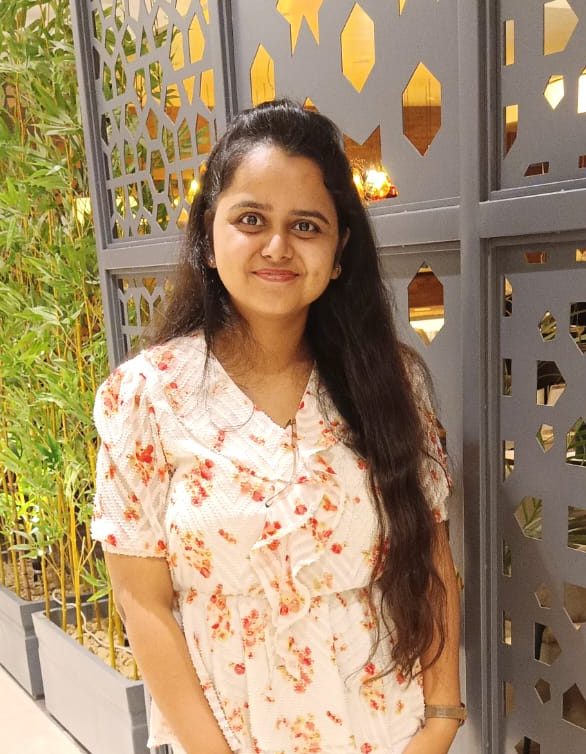
Muskan is a Marketing Analyst at Outgrow. She is working on multiple areas of marketing. On her days off though, she loves exploring new cafes, drinking coffee, and catching up with friends.

